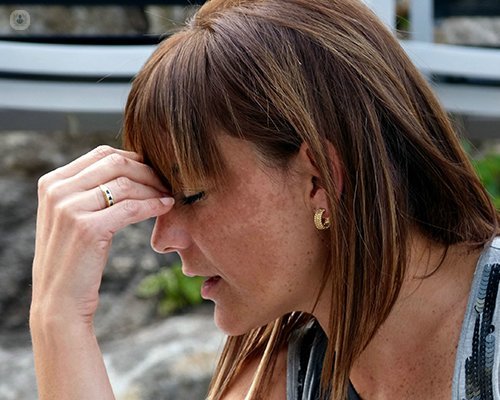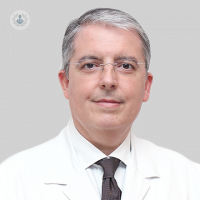Stroke: symptoms, treatment and prevention
Written by:Stroke, also known as stroke, stroke or stroke, it is transient or permanent alteration of the functions of the brain as a result of ischemia or hemorrhage that occurred in any territory of any of its three major elements: cerebrum, cerebellum and medulla. The term stroke comes from Latin and means "blow", denoting his abrupt or sudden onset.
The most common form of stroke is ischemic, caused by lack of blood flow in 80% of cases. Hemorrhages, cerebral or subarachnoid are less frequent but no less relevant.

Symptoms of stroke
Patients who suffer a stroke have brain - related symptoms affected area. The most prominent symptoms are loss of speech, loss of mobility of the limbs, or lack of vision. It may be accompanied by severe headache, loss of consciousness or seizures.
Symptoms may be transient if injuries reversed in a few minutes or hours, or when there may be permanent irreparable damage or stroke. The stroke can be deadly if it affects vital areas of the brain or is global. Stroke is the third leading cause of death in the Western world, the leading cause of permanent disability among adults and one of the leading causes of neurological deficit in the elderly (vascular dementia).
A stroke is a medical emergency. Even transient stroke should be adequately studied to ascertain the cause and possible prevention of new accidents. Unfortunately, when permanent stroke occur, the ability of regression of symptoms is limited. The time from onset of symptoms to specialized performance time is vital to minimize the effects or consequences of neurological deficit. Therefore, in some communities it has successfully implemented the so-called "stroke code" for the identification and health performance from the same place of origin of the patient to entry in highly specialized centers. In them you try to restore blood flow in clogged arteries or stop the bleeding of bleeding arteries. It is losing the minimum number of neurons for minimal neurological deficit or sequel.
Causes of stroke
More than 80% of strokes are ischemic. This lack of irrigation may be due to emboli from the heart (arrhythmias, valvular diseases or post myocardial infarction) or the arterioscleróticcas arteries that carry blood to the brain, carotid and vertebral. The cause can also be due to thrombosis of intracranial vessels. Hemorrhages are often generated by spontaneous rupture of intracranial aneurysms small or fragile vessels that break for hypertension.
Other less common causes include traumatic brain injuries and iatrogenic causes for diagnostic or therapeutic actions related to cerebral arteries.
Stroke Treatment
Strokes are discussed in the so - called "stroke units" Multidisciplinary. The diagnosis is made by radiological imaging techniques. Depending on the causes, stroke is one way or another. Ischemic stroke with less than 6 hours of evolution are attempted recanalization techniques neuro-interventionism with application of special catheters to open arteries and combined with drug treatments as are fibrinolytic from the same place where the patient is collected and continues anticoagulants and / or antiplatelet drugs.
Strokes caused by carotid is involved vascular surgeon to remove plaque cause embolism or alternatively, stents are applied. Bleedings try to cover with therapeutic embolization by catheterization or may be tapped by neurosurgeons. A key chapter for the recovery of damaged functions is early rehabilitation and maintained over months. The rehabilitation physicians, physiotherapists and speech therapists have an important role to minimize the consequences.
How to prevent stroke
Prevention, and other cardiovascular diseases, is to prevent or control called risk factors: hypertension, snuff, hypercholesterolemia and diabetes.
Cerebral aneurysms are congenital. Early detection occurs especially in patients with a family history of cerebral hemorrhage. Of course, if you have suffered a transient ischemic attack or stroke it is advisable to investigate the cause to eliminate it.
On the other hand, we must not forget that the consultation with the specialist if one of these factors suffer or have suffered a transient ischemic attack or stroke prevention is the way more guarantees. Carotid stenosis doppler ultrasonography is detected by a. This test should be performed in all patients with a history of cardiovascular disease at any level, coronary or lower limb. Also patients with cardiovascular risk factors can benefit from this painless and quick test.


